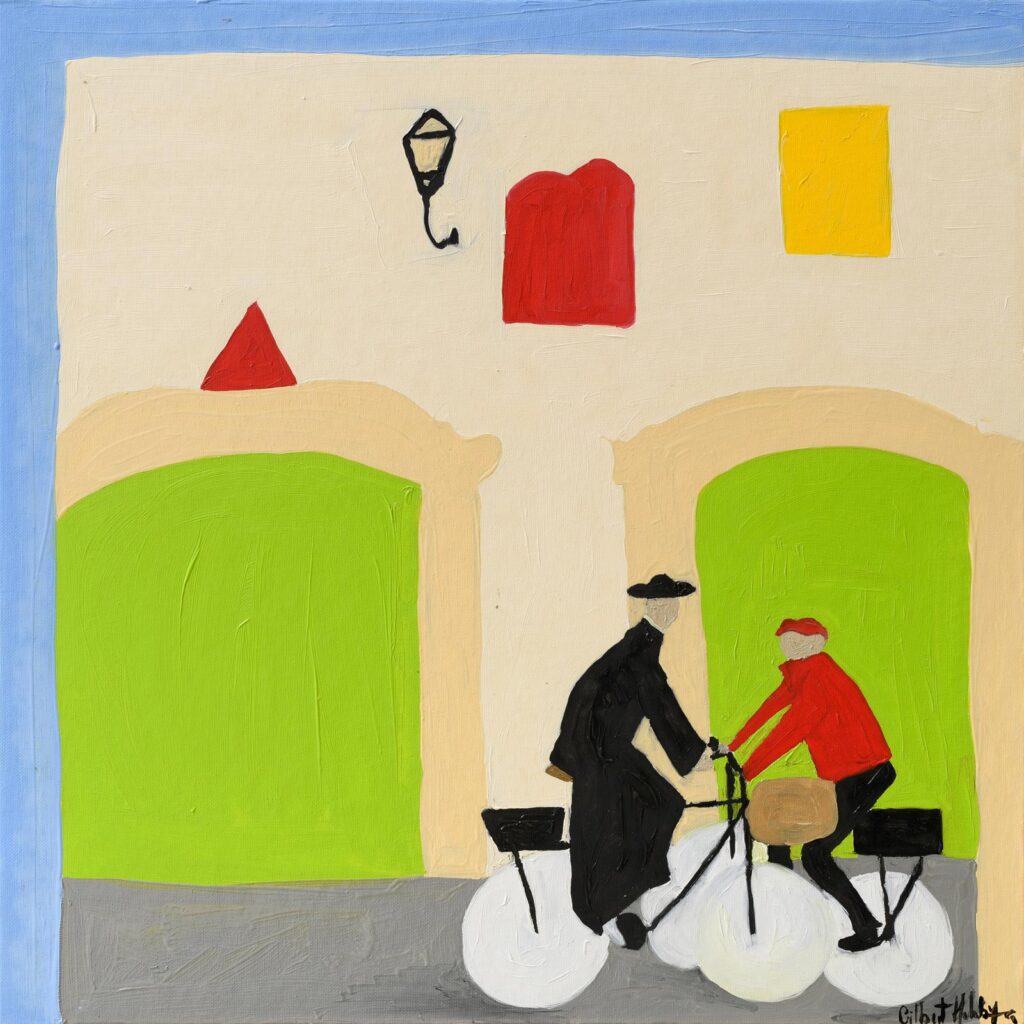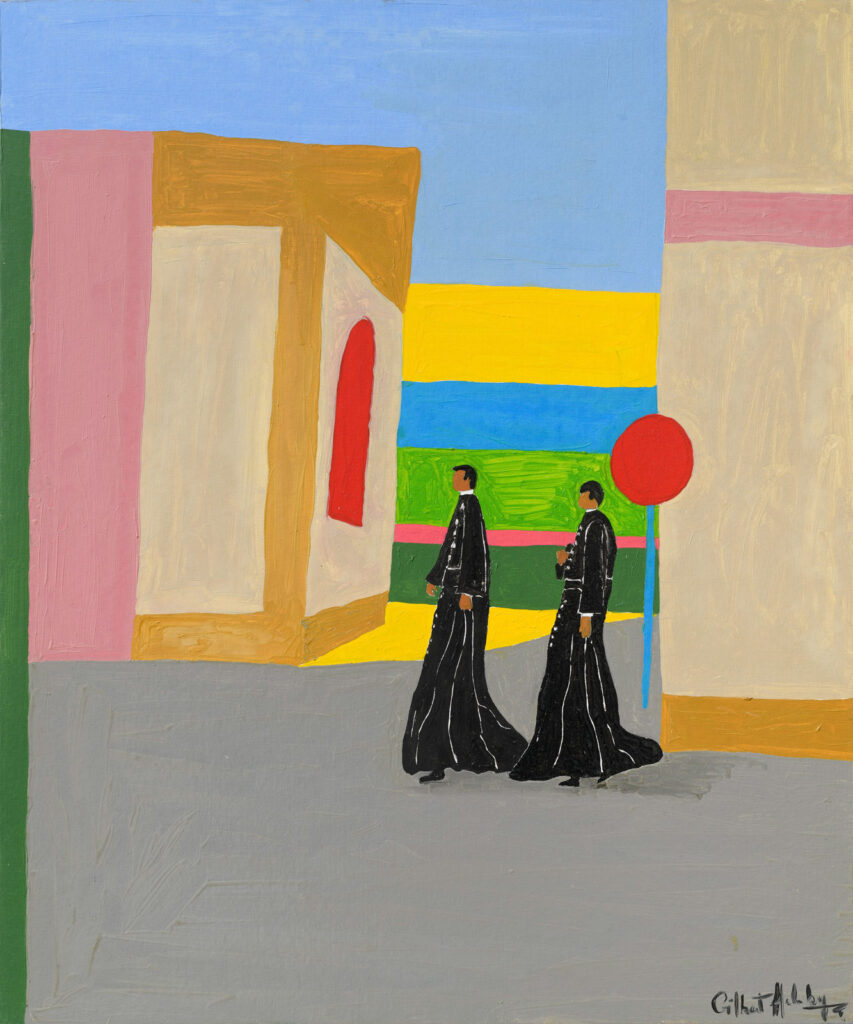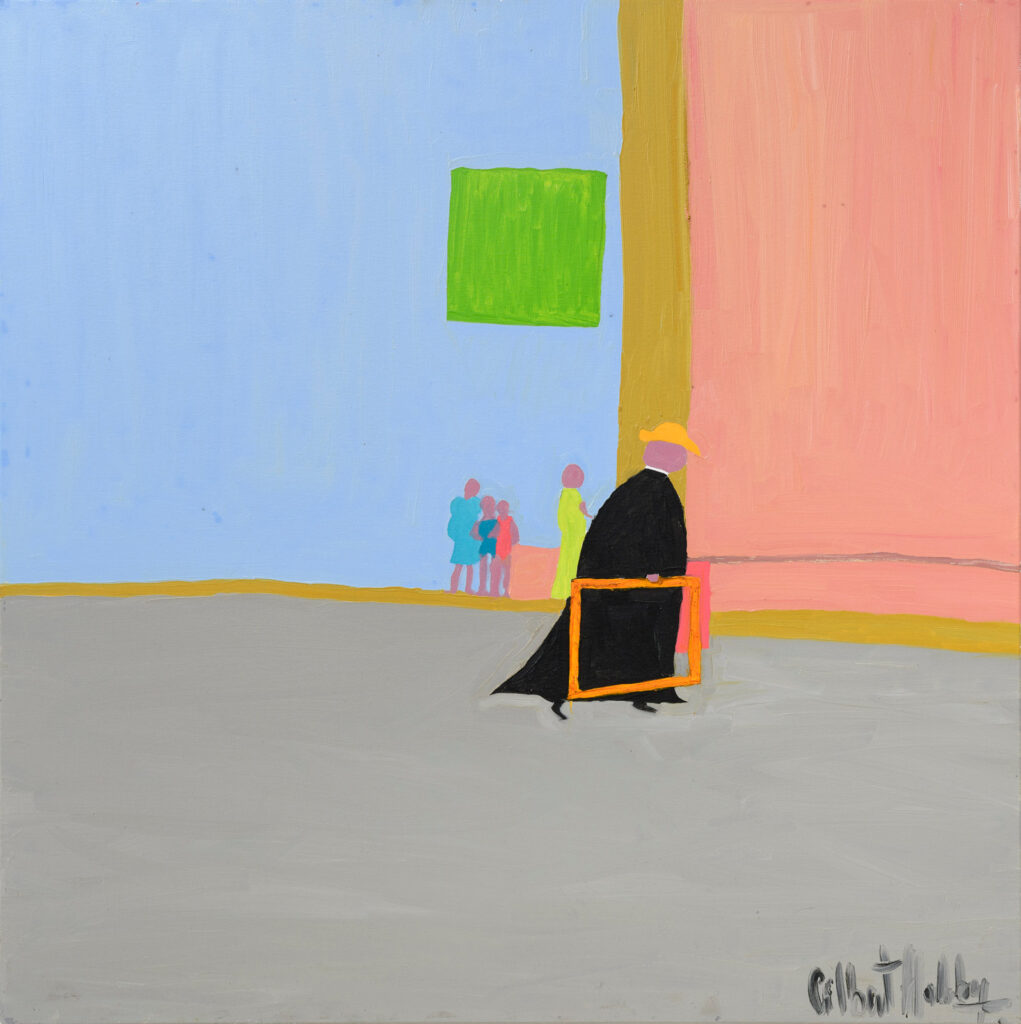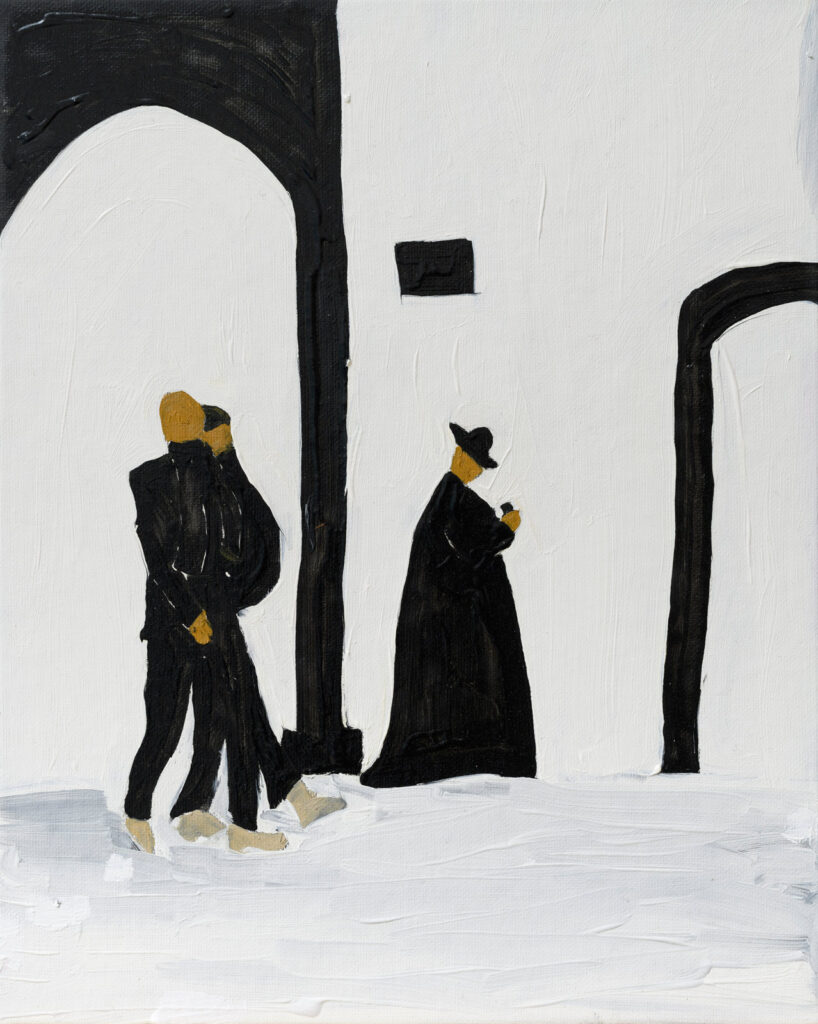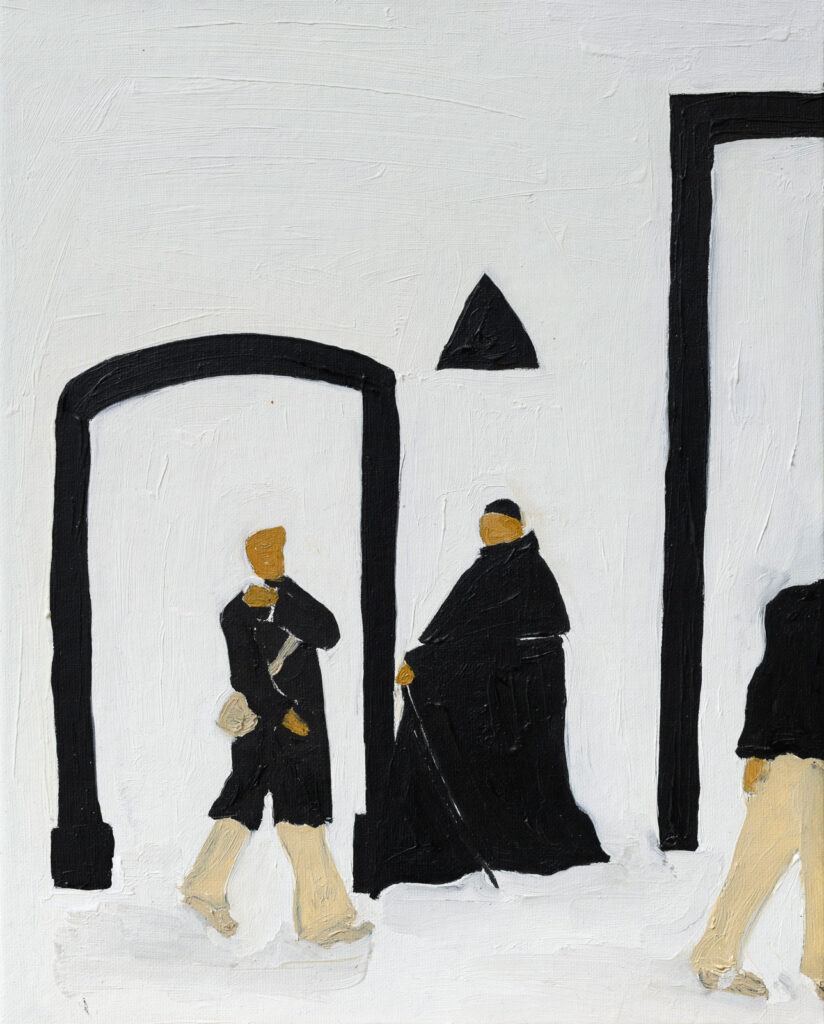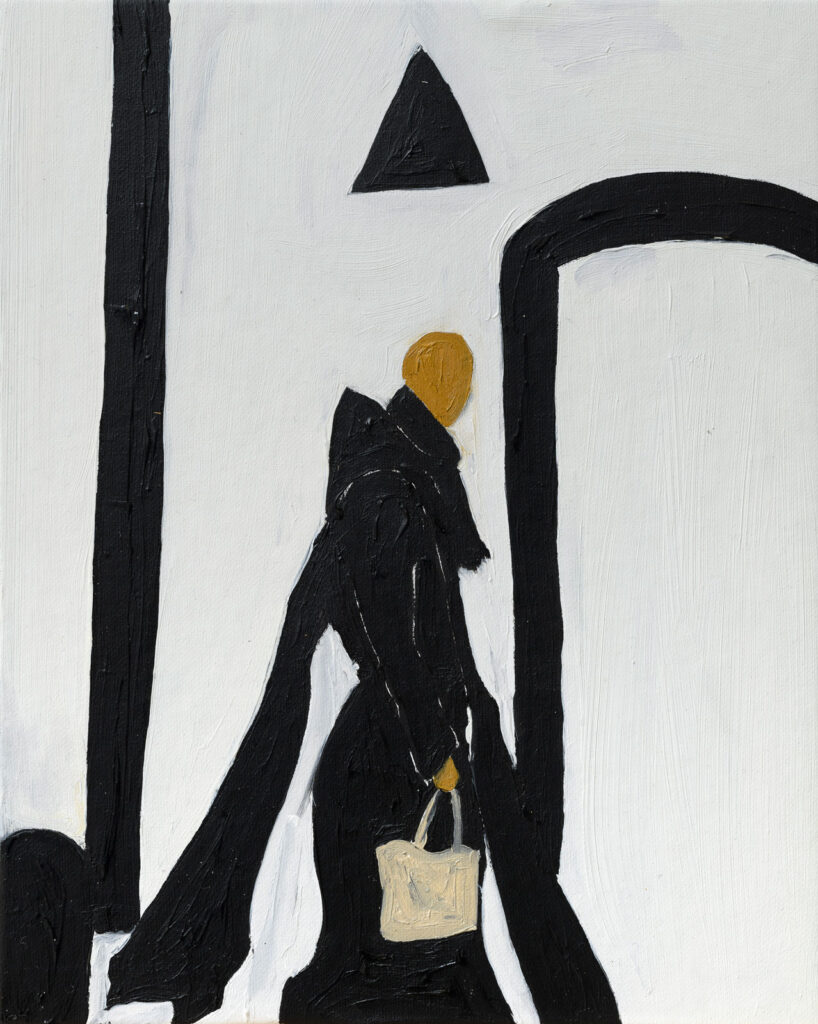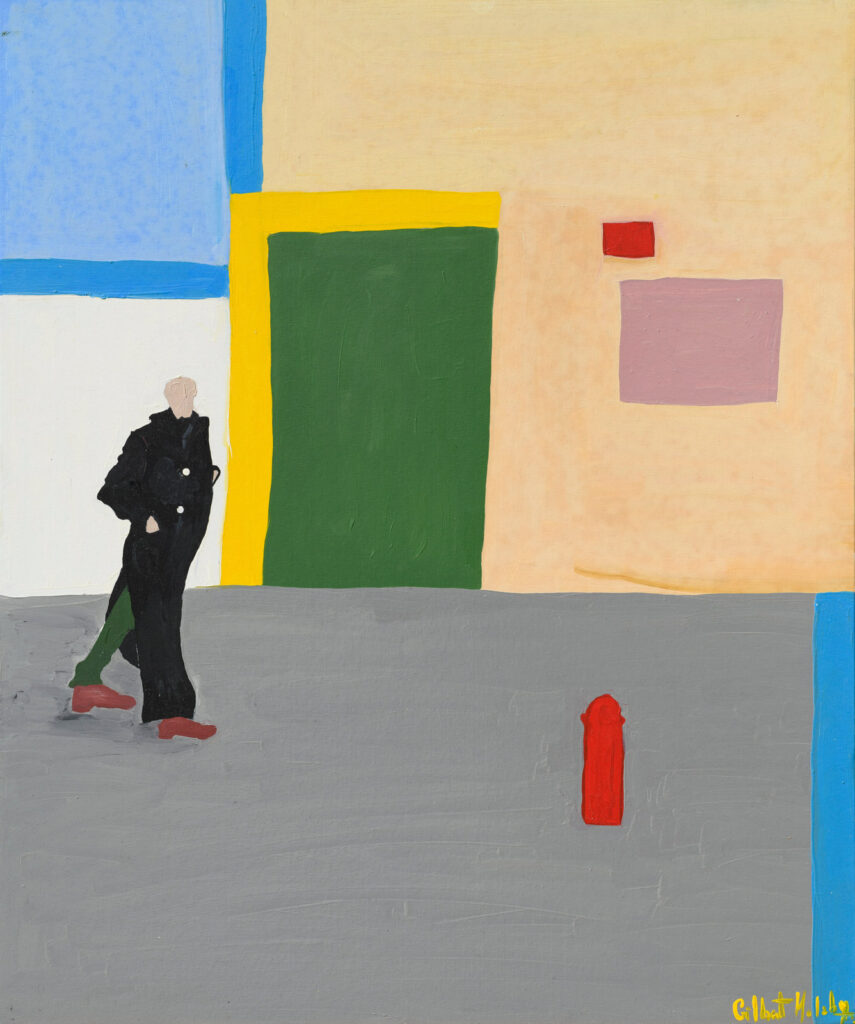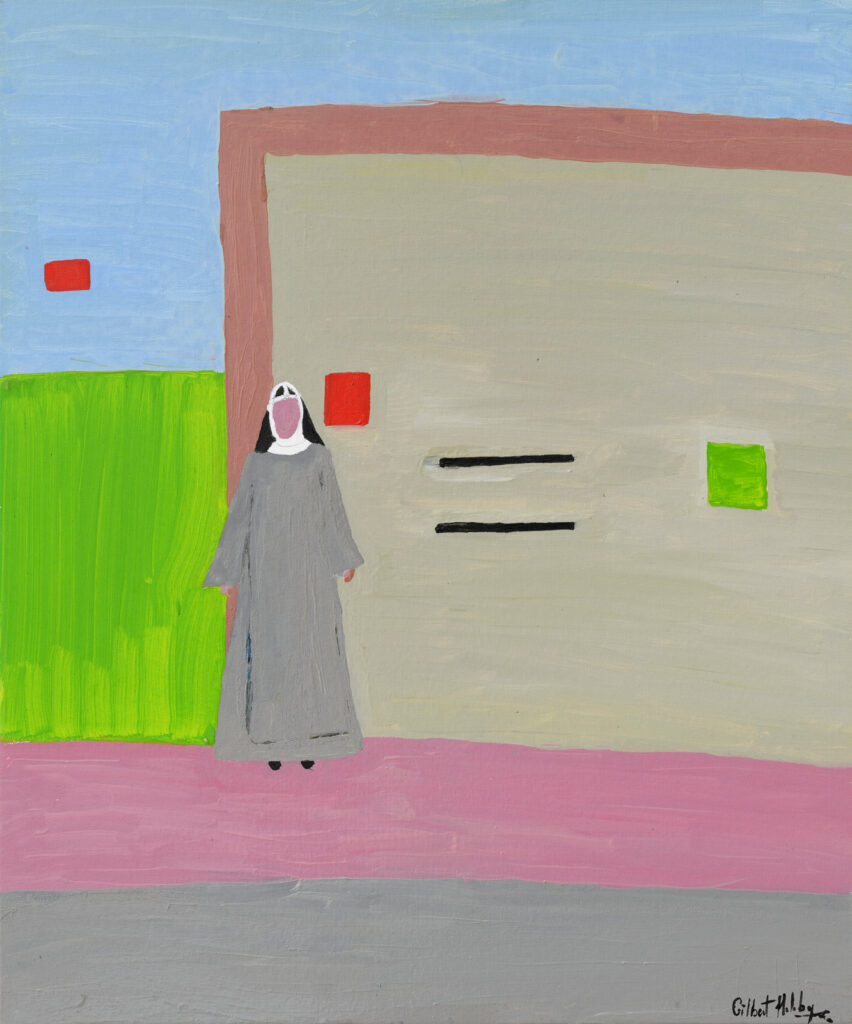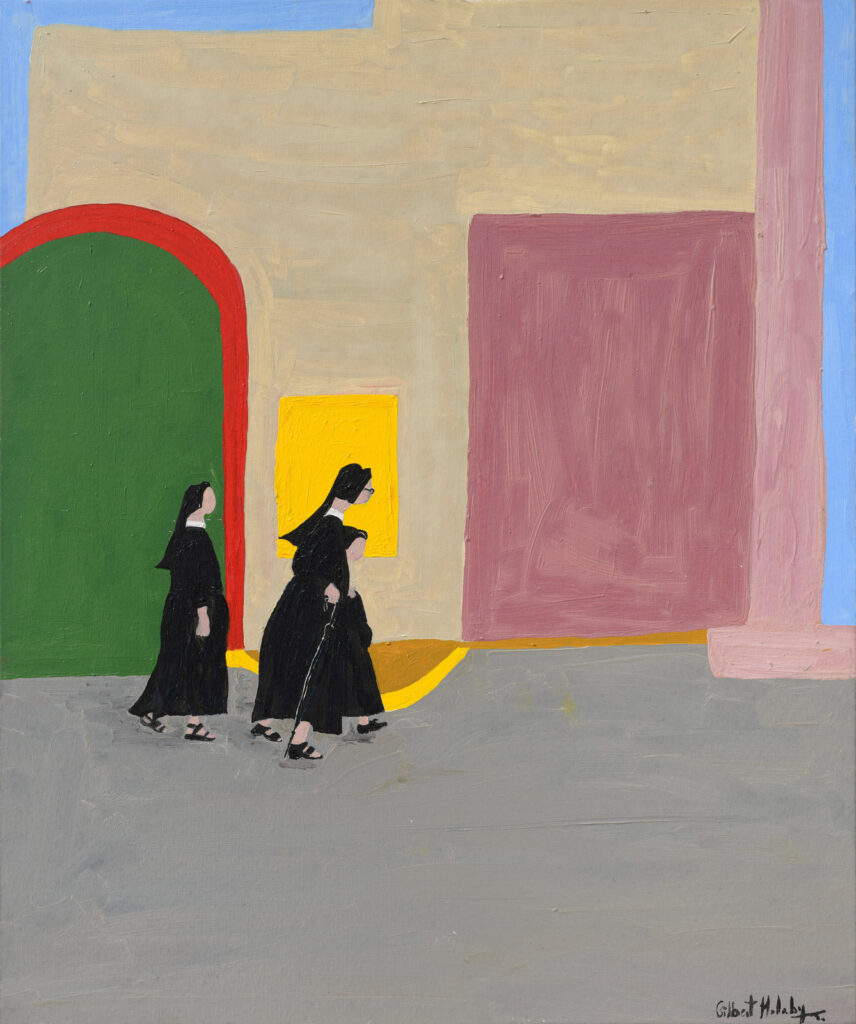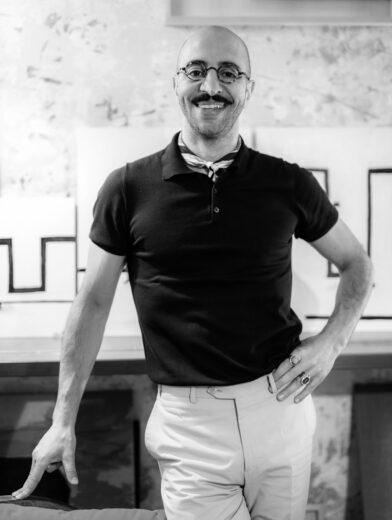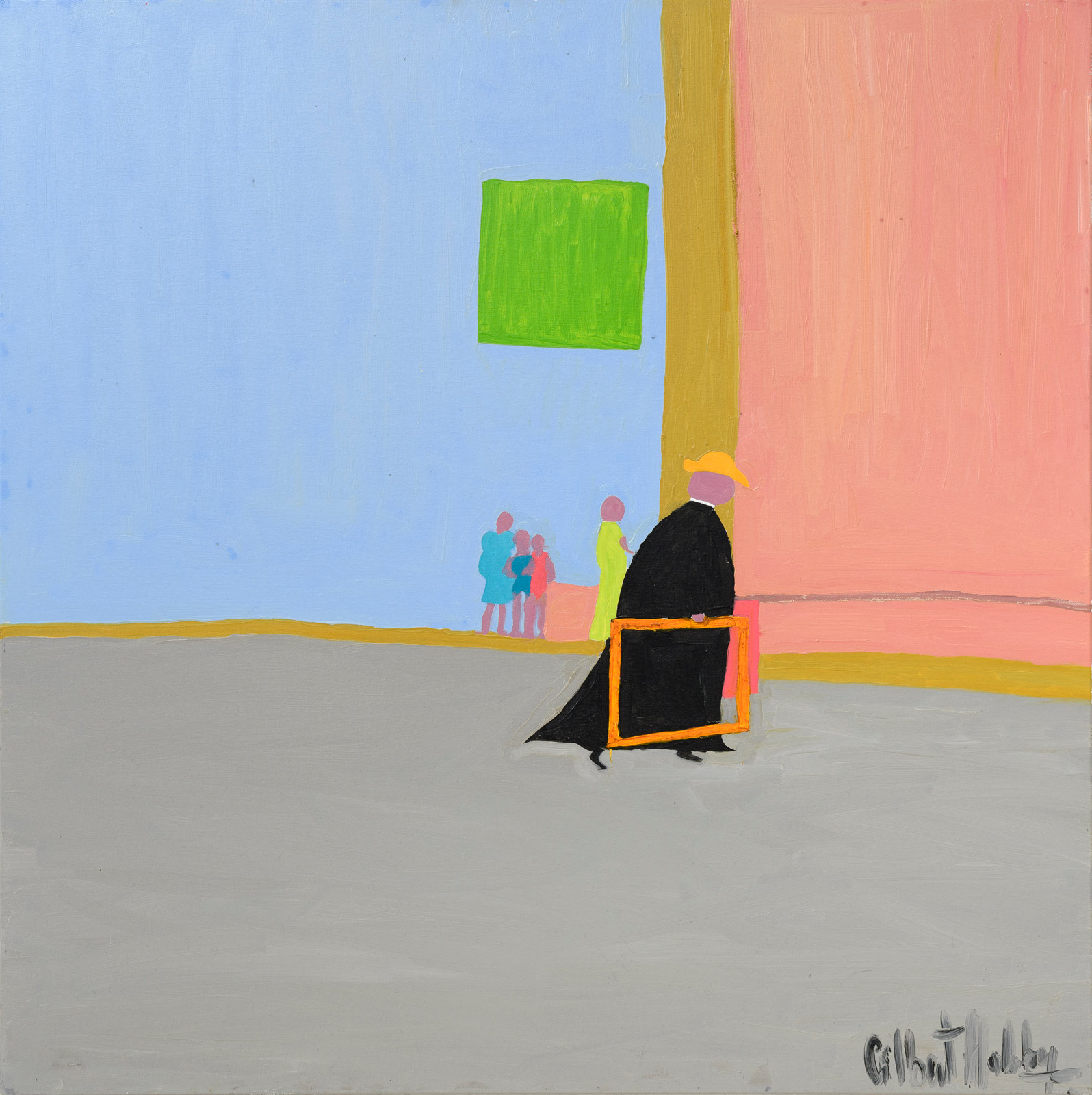
Maja Arte Contemporanea is delighted to host the exhibition “Une Comédie Romaine“, that signs the Roman first solo show of the Lebanese artist Gilbert Halaby (Beirut, 1979).
Only two months after his debut at the Beit Beirut Museum (Beirut, Lebanon) with his solo exhibition “Domus Berytus”, Halaby shows in Rome around thirty paintings accomplished during the last two years.
As Nora Iosia writes in the exhibition catalogue:
“Rome has become the painter’s adoptive city, where he has been living and working for many years. The Eternal City is also the cradle of his pictorial research, the place from which he draws inspiration. Its people merge with its architecture’s blazing light forming a vision, one that could be called of ‘absolute beauty’. It stems from the ‘carpe diem’ spatiotemporal quality of Rome, its blissful indifference to the passing of time or the changing seasons, a lasting trait, which makes its spaces unique in the world.
Crystallised on these ‘Roman’ canvases, the coloured silhouettes incapsulate moving bodies or clothes brushed by the morning breeze.
Every day, Halaby leaves his studio and immerses himself in the bustling historic center, eagerly filming everything that catches his eye on his phone. His attention is drawn to certain personnages, such as priests, cardinals, nuns, vagrants, and even artists, strolling or wondering through the city, who eventually become aware that they are the focus of a collection of slow motion clips.
From this ensemble of videos, he selects stills and studies their many angles. The architecture becomes the bold narrative thread holding this process together, setting new rules that dictate the relationship between past and present. […]
A part of Halaby’s paintings comes from these collected videos, which are segmented and reformed on small or mid-sized canvases painted with primary oil colours. The figures and shapes are created with a single stroke; shadowless, they portray no regret for what is not apparent. Everything is colorful; everything expands on the linen surface lingering between the seen and the imagined. The painting boldly reshapes spaces on the canvas. The blue, red, yellow, pink, black and emerald green are all flawless; they do not make room for nuance, for their power is in their brilliance and youthfulness; they come together and find their purpose within the narrative. The viewer’s gaze is welcomed by a happy sight, one that renounces the complexity of details to exalt a fleeting impression of wholeness, an intuition of fullness.”
Selected works
Gallery
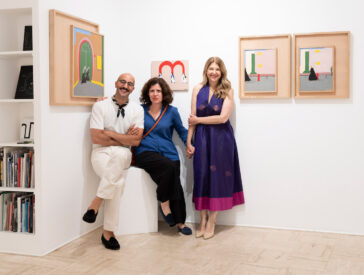
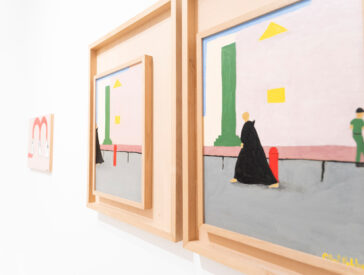
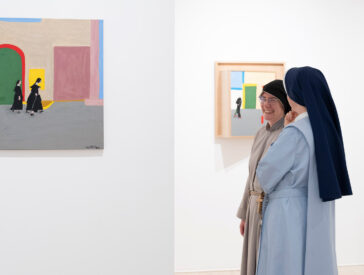
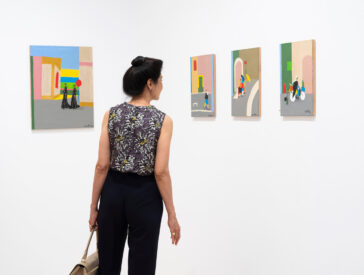
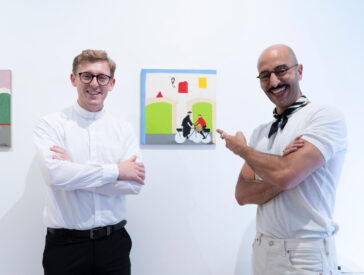
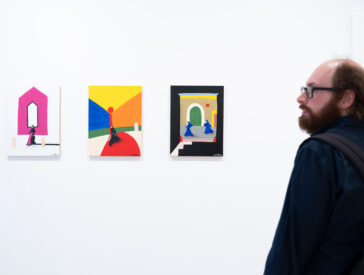
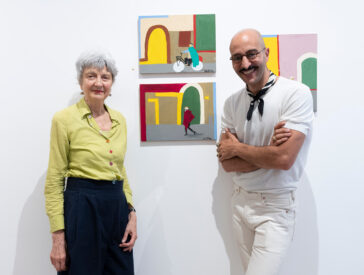
Critical essay
Une Comédie Romaine
By Nora Iosia
After Gilbert Halaby’s recently acclaimed exhibition in his native Beirut, his works will be on show at the Gallery Maja Arte Contemporanea in Rome.
It is this very place that has become the painter’s adoptive city, where he has been living and working for many years. The Eternal City is also the cradle of his pictorial research, the place from which he draws inspiration. Its people merge with its architecture’s blazing light forming a vision, one that could be called of ‘absolute beauty’. It stems from the ‘carpe diem’ spatiotemporal quality of Rome, its blissful indifference to the passing of time or the changing seasons, a lasting trait, which makes its spaces unique in the world.
Crystallised on these ‘Roman’ canvases, the coloured silhouettes incapsulate moving bodies or clothes brushed by the morning breeze.
Every day, Halaby leaves his studio and immerses himself in the bustling historic center, eagerly filming everything that catches his eye on his phone. His attention is drawn to certain personnages, such as priests, cardinals, nuns, vagrants, and even artists, strolling or wondering through the city, who eventually become aware that they are the focus of a collection of slow motion clips.
From this ensemble of videos, he selects stills and studies their many angles. The architecture becomes the bold narrative thread holding this process together, setting new rules that dictate the relationship between past and present. Precisely as the movement of those caught on camera (the feet, bodies, and clothes are all recreated on the canvas with a few clean strokes) begins to suggest the passing of time, measuring the distance between a before and an after, the architectural background imposes upon the viewer a playful statement bolstering eternity, ‘hic et nunc’.
A part of Halaby’s paintings comes from these collected videos, which are segmented and reformed on small or mid-sized canvases painted with primary oil colours. The figures and shapes are created with a single stroke; shadowless, they portray no regret for what is not apparent. Everything is colorful; everything expands on the linen surface lingering between the seen and the imagined. The painting boldly reshapes spaces on the canvas. The blue, red, yellow, pink, black and emerald green are all flawless; they do not make room for nuance, for their power is in their brilliance and youthfulness; they come together and find their purpose within the narrative. The viewer’s gaze is welcomed by a happy sight, one that renounces the complexity of details to exalt a fleeting impression of wholeness, an intuition of fullness. Facial features are removed, the character of these dramatis personae emerges through a glance, revealing their basic traits. In turn, the proportions of the bodies appear in space, the rhythm of the steps is captured in its uniqueness, each person has their place in the world, each step its journey.
The images are born from a radical need to determine forms and make them intelligible, which, in turn, morphs into an experimental reconfiguring of their spatiotemporal possibilities, stretching formal details to their extreme. There is a playfulness, but also a simplicity that brings everything together, and in which everything comes into being without a change of heart, because Gilbert Halaby, I believe, is gifted with a mysterious trait, ‘perfect sight,’ a trait similar to the better-known ‘perfect pitch’ or the ability to recognize the pitch of every sound exactly. Gilbert’s ‘perfect sight’ decodes the language of shapes and colors and separates this from the chaos of everyday living. He captures slivers of reality and almost instantaneously morphs them into new visions; he finds the infinite possibilities within each vision, transforming the sound of the world into a new aesthetic, a new language of shape and color, a new harmony. This visionary process is not free from pathos because everything that seeps through stays: the shadows, faded halos, oil stains on the linen are left; these suggest that once that day has passed, the potency of light and the stubborn presence of colour also fade, as all vision surrenders to the obscurity of night. We have no choice but to live in the juxtaposition of these two fragmented opposites, faithfully awaiting the light to dawn on a new day.

